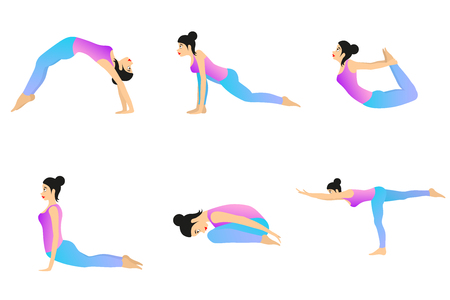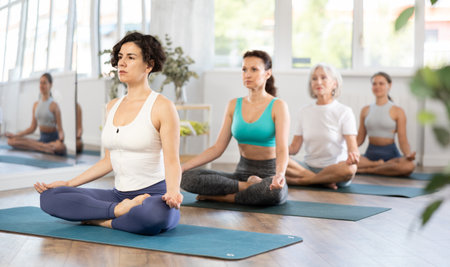Understanding Recovery: The Body’s Natural Healing Process
When we experience an injury or face a chronic condition, our bodies embark on a remarkable journey of healing and adaptation. Recovery is not simply about “getting better” overnight; it is a gradual process where tissues repair, inflammation subsides, and strength slowly returns. During this time, rest is important, but so too is gentle movement that encourages circulation and supports the body’s natural rhythms. This is where mindful practices like yoga can play an essential role in rehabilitation. By focusing on slow, conscious movement, yoga helps to maintain flexibility, reduce stiffness, and gently reintroduce mobility without overstraining injured areas. For those living with ongoing conditions such as arthritis or back pain, consistent yet soft movement allows the body to manage discomfort more effectively while preventing secondary issues caused by immobility. Ultimately, embracing gentle exercise during recovery respects the body’s innate wisdom—supporting healing from within, rather than pushing beyond our natural limits.
2. The Role of Yoga in Rehabilitation
Yoga is increasingly recognised across the UK as a beneficial tool for those on the path to recovery from injury or managing chronic health conditions. Unlike more intensive forms of exercise, yoga offers gentle movement that can be tailored to suit each individual’s needs and current abilities. This mindful approach not only encourages physical healing but also nurtures mental well-being, which is often overlooked during rehabilitation.
One of yoga’s greatest strengths lies in its adaptability. For many recovering from injury or living with ongoing health challenges, conventional exercise may feel daunting or even unsafe. Yoga, however, provides a supportive environment where participants can move at their own pace, guided by breath and awareness. Whether you are returning from a sprained ankle, coping with arthritis, or easing back after surgery, there is a style and set of postures that can be adapted just for you.
Key Benefits of Yoga During Recovery
| Benefit | Description |
|---|---|
| Gentle Movement | Promotes circulation and mobility without placing undue stress on injured tissues. |
| Flexibility | Encourages gradual lengthening of muscles and soft tissue, supporting better range of motion. |
| Strength | Builds stability through slow, controlled movements—crucial for long-term joint health and balance. |
| Adaptability | Postures can be modified with props such as blocks or straps to accommodate varying abilities. |
| Mental Well-being | Breathwork and mindfulness foster relaxation and reduce anxiety, aiding overall recovery. |
Personalised Practice for Every Stage of Recovery
The beauty of yoga in rehabilitation is its focus on meeting you exactly where you are. A qualified instructor can help design sessions that avoid aggravating injuries, while gently encouraging progress. Even simple seated poses or supported stretches can make a world of difference over time. In the UK, it’s common for physiotherapists and rehab specialists to collaborate with yoga teachers, ensuring practices are safe and effective for everyone—from busy Londoners returning to work after an accident to retirees in the countryside managing long-term aches and pains.

3. Safe and Supportive Practice: Choosing the Right Approach
When embarking on a yoga journey for recovery, prioritising safety and support is absolutely vital. Not all yoga classes or instructors are created equal—especially when it comes to addressing injuries or managing chronic conditions. Here are some practical tips to help you make wise choices for your rehabilitation practice.
Finding a Qualified Yoga Instructor
Begin by seeking out instructors who have specialist training in therapeutic or restorative yoga, or experience working with individuals with health challenges. Look for teachers registered with respected UK bodies such as the British Wheel of Yoga (BWY) or Yoga Alliance Professionals UK. Don’t hesitate to ask about their experience with rehabilitation and whether they hold additional qualifications in areas like anatomy, physiotherapy, or adaptive yoga.
Selecting Suitable Classes
Opt for classes specifically labelled as “gentle”, “restorative”, or “therapeutic”. Many studios across the UK offer small group sessions tailored to those recovering from injury or dealing with long-term health issues. Private sessions can also be an excellent choice if you require individual attention. Before joining, contact the studio to discuss your needs and ensure the class content matches your current abilities and goals.
Incorporating Props for Comfort and Safety
Props such as bolsters, blocks, straps, and chairs can make all the difference in supporting your body during practice. Instructors familiar with rehabilitation will often integrate these tools to help you maintain proper alignment and reduce strain. If practising at home, consider investing in a few basic props—or use everyday items like cushions and blankets—to create a nurturing environment where your body feels safe and supported.
By thoughtfully choosing your instructor, class type, and supportive equipment, you’ll foster a positive experience that respects your body’s unique needs. This approach not only aids physical healing but also encourages confidence and relaxation throughout your recovery journey.
4. Everyday Integration: Making Yoga Part of Your Recovery Routine
Bringing yoga into your daily life doesn’t have to be complicated or time-consuming, especially when you’re focused on recovery from injury or managing a chronic condition. The beauty of yoga lies in its adaptability—you can create a nurturing routine with minimal fuss and everyday household items. Let’s explore some gentle ways to seamlessly blend yoga into your home environment and daily rhythm.
Short, At-Home Sessions
Rather than committing to lengthy classes, try incorporating brief sessions that fit easily into your morning or evening routine. Even five to ten minutes of mindful movement can make a noticeable difference in mobility and mental clarity. Here’s a simple structure you might follow:
| Time of Day | Activity |
|---|---|
| Morning | Gentle stretches in bed, seated breathing exercises |
| Lunch break | Standing poses using a chair for support |
| Evening | Restorative poses with cushions and blankets, guided relaxation |
Mindful Breathwork Throughout the Day
You don’t need a mat to practice yoga; breathwork can be done anywhere—while waiting for the kettle to boil or sitting at your desk. Take a few moments to focus on slow, deep breaths, letting your exhale be slightly longer than your inhale. This simple act helps reduce stress and supports healing from within.
Using Common Household Items
No fancy equipment is necessary. Soft blankets double as supportive props for restorative poses, while firm cushions or pillows can replace bolsters. A sturdy chair is perfect for modified standing postures if getting down on the floor isn’t comfortable yet. Here are some practical examples:
| Household Item | Yoga Use |
|---|---|
| Blanket | Knee padding, warmth during relaxation, gentle back support |
| Cushion/Pillow | Sitting support, chest opening in supported backbends |
| Chair | Support for balance poses or seated stretches |
Cultivating Consistency with Small Rituals
Create small rituals to anchor your practice—perhaps lighting a candle before stretching or playing calming music during breathwork. Over time, these mindful moments become second nature, supporting both body and mind throughout your recovery journey.
5. Balancing Mind and Body: The Emotional Benefits of Gentle Yoga
During the journey of rehabilitation, it’s easy to focus solely on the physical aspects of recovery. However, gentle yoga offers a holistic approach, nurturing both mind and body in tandem. One of the most profound benefits of incorporating gentle yoga into your recovery routine is its calming influence on stress and anxiety. Slow, mindful movements paired with deep, steady breathing can help soothe the nervous system, bringing about a sense of calm that is particularly valuable when facing uncertainty or discomfort.
Yoga also cultivates resilience—a quiet inner strength that supports you through setbacks and plateaus often encountered during rehabilitation. By encouraging present-moment awareness, yoga helps you remain patient with your progress and fosters an attitude of self-compassion. This can be especially meaningful in British culture, where there can sometimes be a tendency to “soldier on” and minimise emotional struggles. Gentle yoga creates a safe space to acknowledge both challenges and achievements without judgement.
Moreover, the practice of yoga encourages holistic wellbeing by addressing not just physical symptoms but also emotional needs. Guided relaxation, restorative postures, and meditative practices support better sleep and mood regulation—essentials for anyone navigating injury or chronic conditions. As you learn to listen to your body’s cues with kindness rather than criticism, you’re more likely to experience a sense of wholeness and acceptance.
Whether practiced in a local studio or at home with a cuppa nearby, gentle yoga offers British communities an accessible way to care for mental health during times of healing. By weaving together movement, breathwork, and mindfulness, this tradition gently restores balance to both mind and body—helping you feel more grounded, hopeful, and resilient as you move forward on your path to recovery.
6. Local Resources and Community Support in the UK
Finding the right support and resources can make all the difference on your path to recovery with yoga. In the UK, there is a growing network of rehabilitation-friendly yoga providers who understand the unique needs of those recovering from injury or managing chronic health conditions. Many local studios, such as Yoga for Health London, Adaptive Yoga UK, and Mindful Movements Manchester, offer gentle classes tailored to various abilities and stages of recovery. If you prefer practising at home, trusted online platforms like Yoga with Adriene (UK-based sessions available), Movement for Modern Life, and NHS-approved videos provide guided routines suitable for rehabilitation. For additional connection and encouragement, look out for supportive communities such as The British Wheel of Yoga’s Therapeutic Group or local Facebook groups like “Yoga Recovery UK,” where you can share experiences and gain advice from others on similar journeys. Don’t forget that many GPs and physiotherapists across the country now recommend yoga as part of a holistic approach to recovery—so do ask your healthcare team about classes or instructors in your area. By tapping into these resources, you’ll find both expertise and community spirit that foster confidence, helping you feel supported every step of the way.


